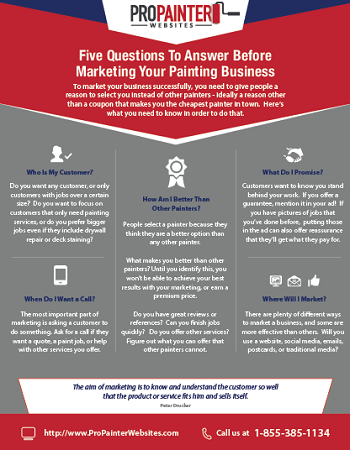Vital Seasonal Aspects Of Commercial Exterior Paint: What You Ought To Understand
Vital Seasonal Aspects Of Commercial Exterior Paint: What You Ought To Understand
Blog Article
Writer-Ford Skafte
When you're intending a commercial external paint task, seasonal factors can make or damage your outcomes. You'll wish to consider how temperature and moisture effect paint application and drying times. Picking the right season can ensure your paint sticks effectively and lasts much longer. But which seasons are genuinely the very best for this type of work? Let's check out the crucial elements that can affect your project's success.
The Impact of Temperature on Paint Application
When you're planning a business exterior painting project, the temperature level can considerably influence how well the paint adheres and dries out.
Ideally, you intend to paint when temperature levels vary between 50 ° F and 85 ° F. If it's as well chilly, the paint might not cure appropriately, causing concerns like peeling off or fracturing.
On the other hand, if it's too warm, the paint can dry too swiftly, protecting against correct attachment and leading to an uneven coating.
You must additionally think about the time of day; early morning or late afternoon provides cooler temperatures, which can be extra favorable.
Constantly examine the supplier's recommendations for the specific paint you're using, as they often provide support on the ideal temperature range for optimal outcomes.
Humidity and Its Result on Drying Times
Temperature level isn't the only environmental element that affects your industrial external paint project; moisture plays a significant duty as well. visit the site can decrease drying times substantially, affecting the general high quality of your paint task.
When the air is filled with moisture, the paint takes longer to treat, which can bring about concerns like poor attachment and a greater danger of mold growth. If you're repainting on a particularly damp day, be gotten ready for extended wait times in between coats.
It's critical to keep an eye on neighborhood weather conditions and plan accordingly. Preferably, go for humidity degrees in between 40% and 70% for ideal drying.
Keeping these factors in mind guarantees your task stays on track and delivers a long lasting surface.
Best Seasons for Commercial Exterior Painting Projects
What's the best season for your industrial exterior painting tasks?
Springtime and early loss are generally your best bets. Throughout these periods, temperature levels are mild, and humidity degrees are frequently lower, producing excellent problems for paint application and drying out.
Stay clear of summer season's intense heat, which can create paint to completely dry also quickly, leading to poor attachment and finish. Similarly, wintertime's cold temperatures can impede proper drying out and healing, taking the chance of the longevity of your paint job.
Aim for days with temperature levels in between 50 ° F and 85 ° F for ideal results. Remember to check the neighborhood weather prediction for rain, as damp conditions can wreck your job.
Preparation around these aspects ensures your painting job runs smoothly and lasts longer.
Conclusion
To conclude, planning your industrial external painting tasks around seasonal considerations can make a considerable difference in the end result. By organizing work during the excellent temperature levels and moisture degrees, you'll make sure far better adhesion and drying times. commercial business painter in mind to watch on local weather prediction and select the correct time of year-- spring and very early loss are your best choices. Taking these actions will help you accomplish a resilient and expert coating that lasts.
